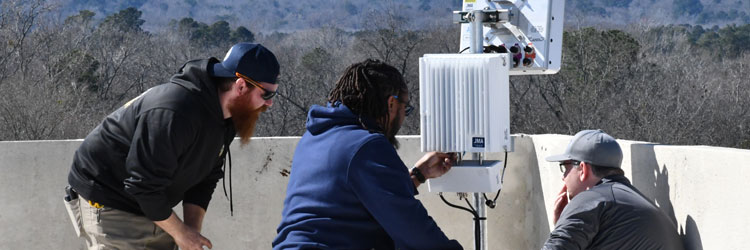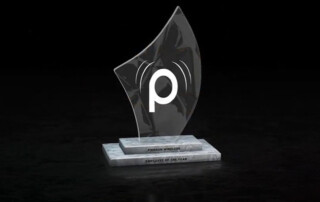Cell on Wheels, also called COWs, are an important asset in the telecommunications arsenal. They are mobile, quick to deploy, and can be utilized in a variety of situations and locations to deliver cellular network coverage.
COWs were terrestrial, that is until AT&T debuted a Flying COW (Cell on Wings) in 2017 that utilized a tethered drone carrying a small cell and antennas to deliver enhanced cellular coverage to an underserved area. The tether provided power and a secure data connection via fiber to the drone, allowing the Flying COW to stay aloft at an altitude of 300 feet for an unlimited period of time. Check out our 2017 blog on the AT&T Flying COW.
A lot has evolved in telecommunications over the past five years, and through those changes and modifications, AT&T has continued to improve upon its aerial product. In April 2022, AT&T again achieved an industry first by successfully transmitting a 5G signal from a drone hovering above a Missouri field.
AT&T first reported its successful aerial 5G trial via press release on June 2.
“We had intermittent, weak LTE signal at the flight location before we launched the 5G Flying COW,” said Ethan Hunt, Unmanned Aircraft Systems (UAS) Principal Program Manager, AT&T. “We flew the drone up to about 300 feet, turned on the signal and it began transmitting strong 5G coverage to approximately 10 square miles. Drones may use 5G for command and control or to stream video, but the AT&T 5G Flying COW is the only drone that provides a 5G network.”
AT&T has leveraged its Flying COWs – in both drone and mini-copter varieties – to deliver LTE coverage to areas impacted by natural disasters (like Hurricane Maria in Puerto Rico) and in support of large-scale events for years. However, the new 5G-capable Flying COWs will provide an enhanced experience
“Our focus within the drone world is connectivity. All of our drone solutions have that focus,” said Art Pregler, UAS Program Director, AT&T. “5G brings a lot of new capability to the table. We can connect a lot larger number of devices with 5G. When we put that up, we can share with a larger population. It’s enabling a lot more solutions, including human-to-machine interface that are now capable that weren’t previously possible.”
Pregler also previewed ways AT&T is working to improve its fleet of Flying COW solutions.
“We are currently working through many exciting technical challenges to expand the capabilities of our Flying COWs,” said Pregler. “We’re working to autonomously fly without tethers for months without landing, using solar power to provide secure, reliable, and fast 5G connectivity to large numbers of users over wide geographic areas. This solution may one day help bring broadband connectivity to rural and other underserved communities across the U.S. and elsewhere.”























Leave A Comment